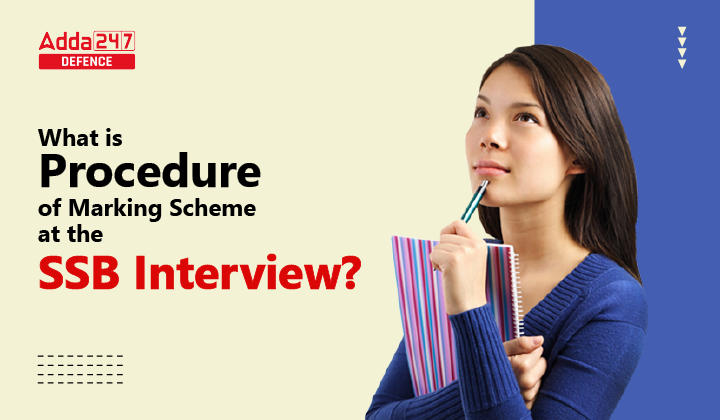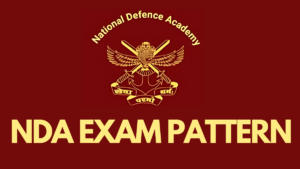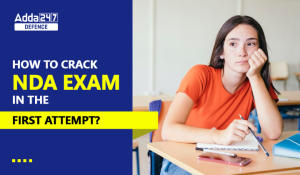Marking Scheme at the SSB Interview
The Service Selection Board (SSB) interview is a five-day assessment process that is used to select candidates for the Indian Armed Forces. The SSB interview is a comprehensive assessment of a candidate’s personality, leadership potential, and suitability for a career in the military. The selection process at the SSB is based on highly scientific and well-evolved techniques, which aims at assessing the personality traits of an individual in the context of the requirements of the Defence Forces.
General Marking Scheme at the SSB Interview
- The SSB evaluation method is different from the marking system used in school or college assessments.
- The only part of the SSB interview that uses a traditional marking system is the OIR (Officer’s Intelligence Rating) test, which is part of the screening process.
- In this test, each correct answer is awarded a certain number of marks, and the total score is calculated as a percentage.
- The Officer Intelligence Rating (OIR) test is a test of a candidate’s intelligence. It consists of two test booklets, each with around 40 (sometimes 50) questions. You will be given 17 minutes to answer the questions in each booklet. You must try to answer all of the questions in the given time.
- The OIR test is a multiple-choice test, and each question has four answer options. There is no negative marking in the OIR test, so you should attempt to answer all of the questions, even if you are not sure of the answer.
Marking Scheme in SSB Interview
During the first four days of the SSB interview, which includes the screening, psychological tests, GTO tasks, and a personal interview, there are three assessors who each award 300 points for the medical test, GTO, and personal interview. The total points available for the entire SSB interview are 900.
To pass the SSB interview, a candidate must obtain a minimum of 90 points from each assessor, which means a total of 270 points from the three assessors combined. The 900 total points are divided equally among the four test phases, with each phase having 225 marks available. Therefore, to be successful in any test phase, a candidate must receive at least 90 marks out of the 225 allocated for that phase. Scoring less than 90 marks in any phase would result in a “No” decision from the assessors for that particular phase.
Example:
- In the interview round, one candidate receives 80 marks, 70 marks in the GTO round, and 75 marks in the psychology round, totaling 225 marks.
- Another candidate manages to score a total of 250 marks, falling short of the required minimum of 270 marks. As a result, the conference round’s importance comes into play. If a candidate’s marks in the conference round are higher than 240, it will be the determining factor in whether they are recommended or not.
SSB Assessment: Subjective
The assessors in the SSB interview follow well-defined OLQ (Officer Like Qualities) definitions and assessment guidelines, making the system highly scientific. However, determining what level of a certain quality is sufficient for a candidate cannot be objectively measured. Each assessor has their own mental benchmark for evaluating candidates and assigns scores to the 15 OLQs based on their judgment, making it a subjective process.
- During the psychological exam, if an assessor is uncertain about a candidate’s evaluation, they have the option to consult with a psychologist colleague to reach a more informed decision.
- On the other hand, the GTO or IO (Group Testing Officer or Interviewing Officer) does not have the luxury of seeking a second opinion. They must assess a candidate’s OLQs in real-time as they perform, and there is no recorded video footage available for later review.
The SSB interview employs three main categories of assessment
- Candidates who are deemed unsuitable for selection are placed in the category of being “clearly unfit.”
- Those candidates who fall in the middle, with potential for recommendation based on their performance in the other two assessment techniques, are considered “borderline cases”.
- Candidates who demonstrate strong suitability and are highly likely to be recommended for selection are classified as “clearly fit.”
Usually, a candidate who is clearly unfit or fit for selection based on one assessment method will also be clearly unfit or fit based on the other two methods. As a result, there is no need for much discussion in the “Conference” to reach a decision.
However, there are cases where the assessment results are borderline. In these cases, one assessor may believe that the candidate is slightly unfit for selection, but there is nothing seriously wrong with their personality. In this case, the decision of whether to select or reject the candidate will be based on the results of the other two assessment methods and the discussion in the “Conference” to reach a consensus.


 Important Topics to Score 300+ in NDA GA...
Important Topics to Score 300+ in NDA GA...
 NDA Exam Pattern 2025 for GAT and Maths
NDA Exam Pattern 2025 for GAT and Maths
 How to Crack NDA Exam in the First Attem...
How to Crack NDA Exam in the First Attem...
